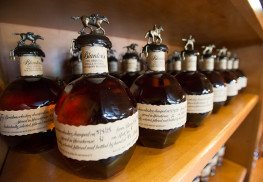Rye Not

Rye whiskey’s roots run deep in our great land. Throughout the 1600s and 1700s, settlers found that rye could not only grow anywhere but it also thrived in the Northeast’s harsh winters. So, naturally, early Americans harvested rye for bread, beer, and (of course) distillate. Pennsylvania, Maryland, and Virginia were home to early rye distilleries with Pennsylvania rye being commonly referred to as Monongahela, named after the distillery’s water source—the Monongahela River.
George Washington distilled Secale cereale L. and one of Washington’s pals, Thomas Jefferson, who was more of a wine drinker, sent bushels of rye to a Mrs. Meriwether to be distilled. Pioneers traveled West with jugs and barrels of Monongahela to barter, trade, and drink. “The best and greatest quantity of rye whiskey is made on this (Monongahela) river,” wrote traveler Zadok Craker in the 1817 book, The Navigator.
After Prohibition, rye lost a little of its luster, but survived with such brands as Mount Vernon, Town Tavern, Rittenhouse, Old Overholt, and Hunter Baltimore Rye. Since rye had a connection to George Washington—thus the Mount Vernon brand— the makers were among America’s true pioneers in marketing. According to a 1935 Hunter Baltimore Rye Whiskey ad: “In the Gay Nineties, and on through the Spanish-American War when Theodore Roosevelt took his Rough Riders to Cuba, Hunter Rye was in demand nation-wide, and had become well-known in London. ‘First Over The Bars,’ it had won a world reputation for taste among English-speaking peoples—it was in fact the largest-selling rye whiskey in the world.” Rye whiskey people could sure tell a story.
SHARE ON
You may also like
The entire category of liqueurs is one to pay atte...
Hundreds of years ago, long before iron rails and ...
An excerpt…In the realm of American whiskey, the...



























